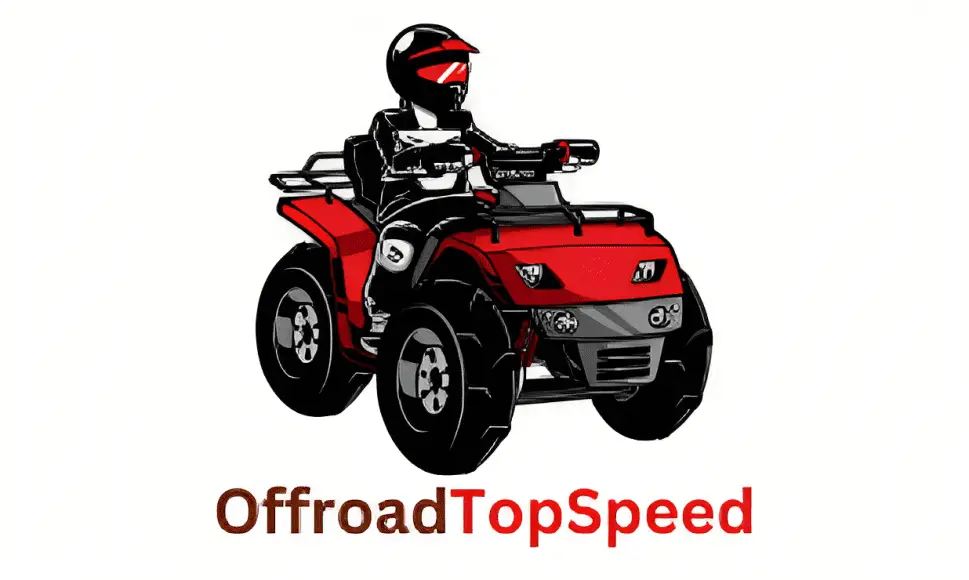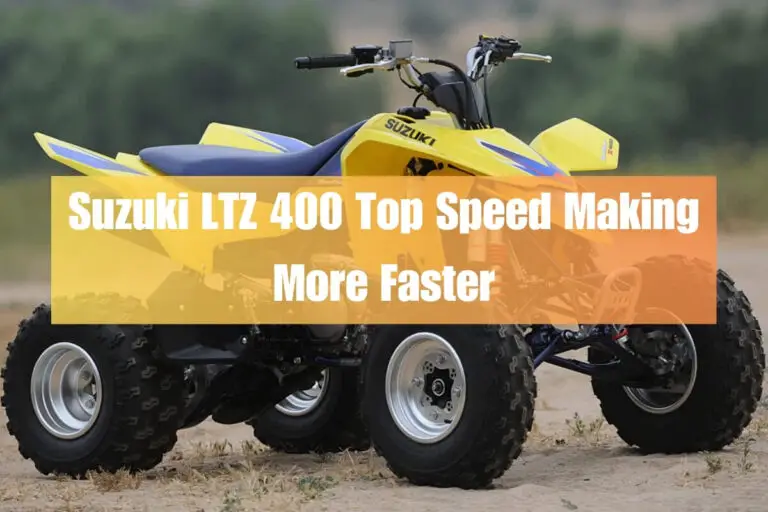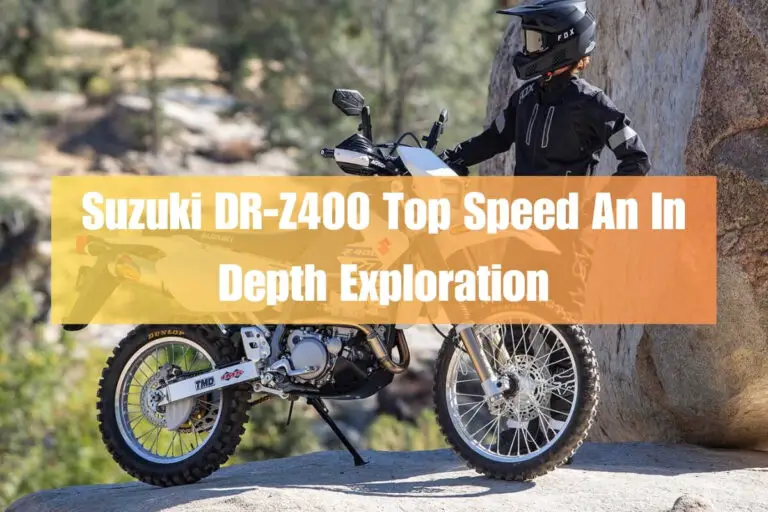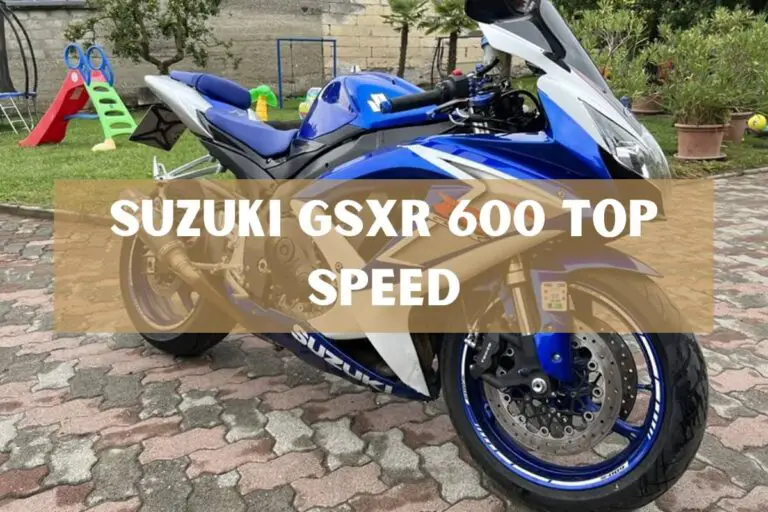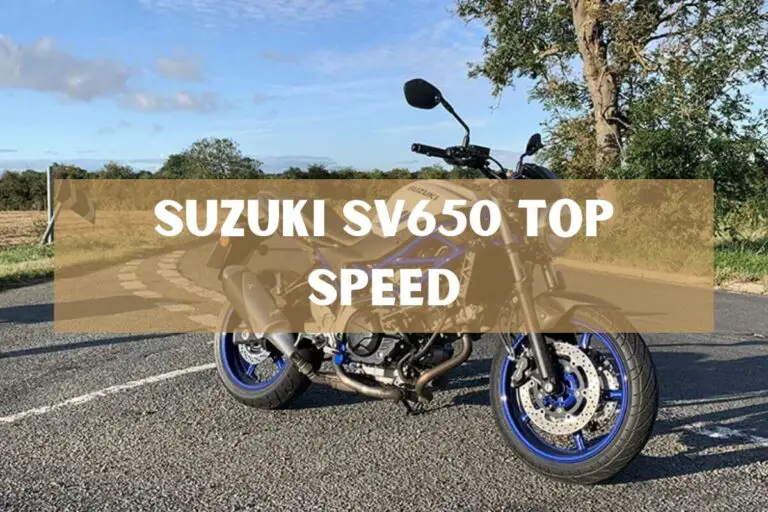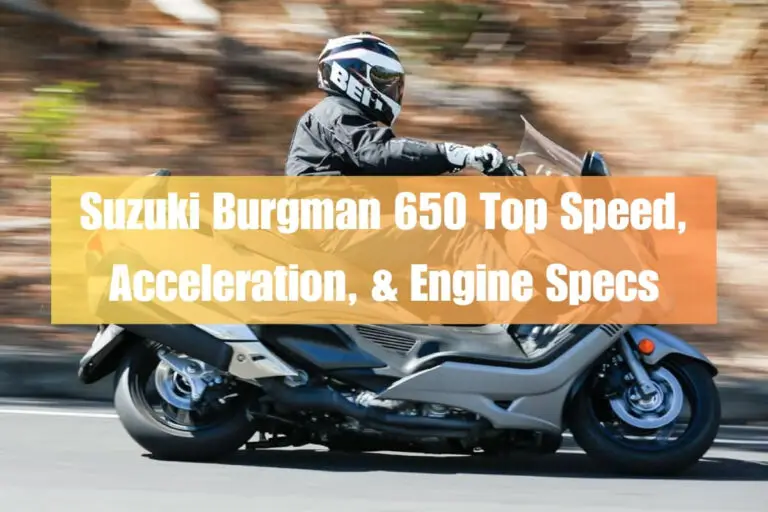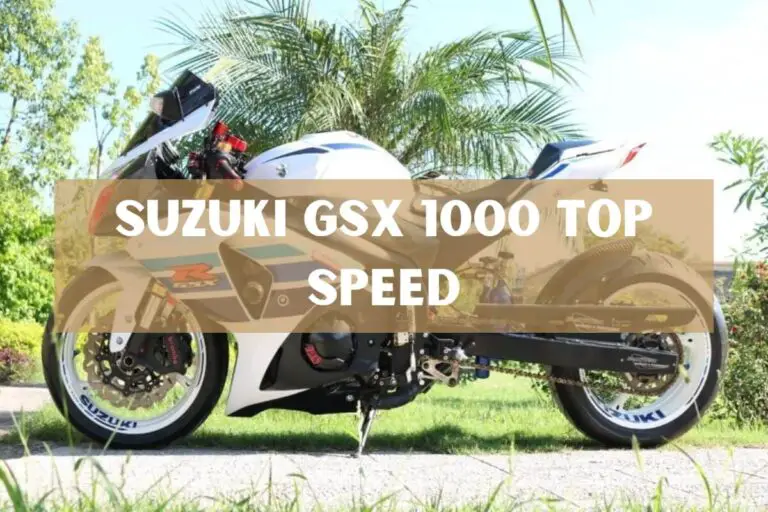suzuki hayabusa top speed: Complete Technical Analysis
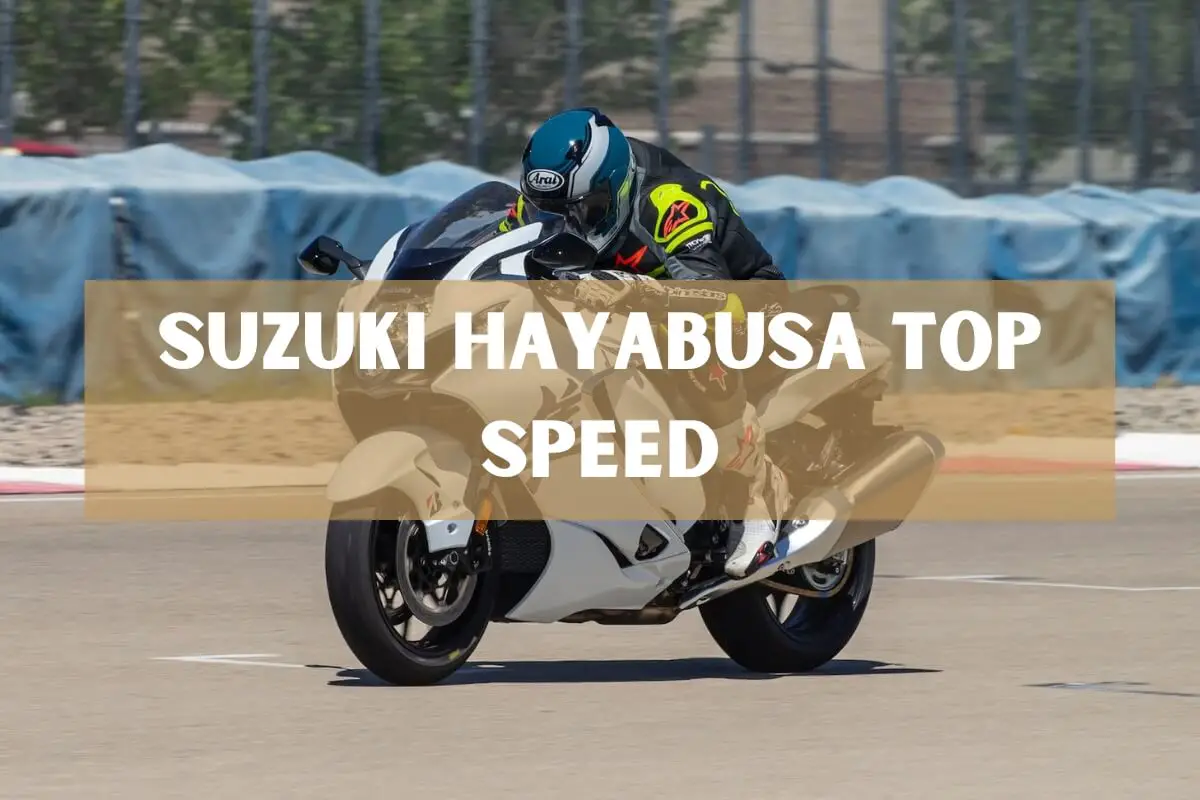
The Suzuki Hayabusa sport bike burst onto the motorcycle scene in 1999 with its unrivaled top speed capabilities. Over two decades later, this Japanese superbike still holds the crown as the fastest production motorcycle in the world.
But what exactly allows the “Busa” to reach record-shattering velocities nearing 200 mph?
The Hayabusa combines a monster 1340cc engine, specialized ram air intake, slippery aerodynamic bodywork, and precision engineering to deliver blinding acceleration that peaks with an electronically limited top speed of 186 mph (300 km/h).
This post will cover everything you need to know about the Suzuki Hayabusa’s extreme performance, from the technical details behind its incredible speed to what it feels like touching nearly 200 mph on two wheels. We’ll also dive into the model’s history, speed limiter controversies, record top speed runs, and why the Hayabusa remains an icon for speed demons worldwide.
Suzuki Hayabusa History and Background
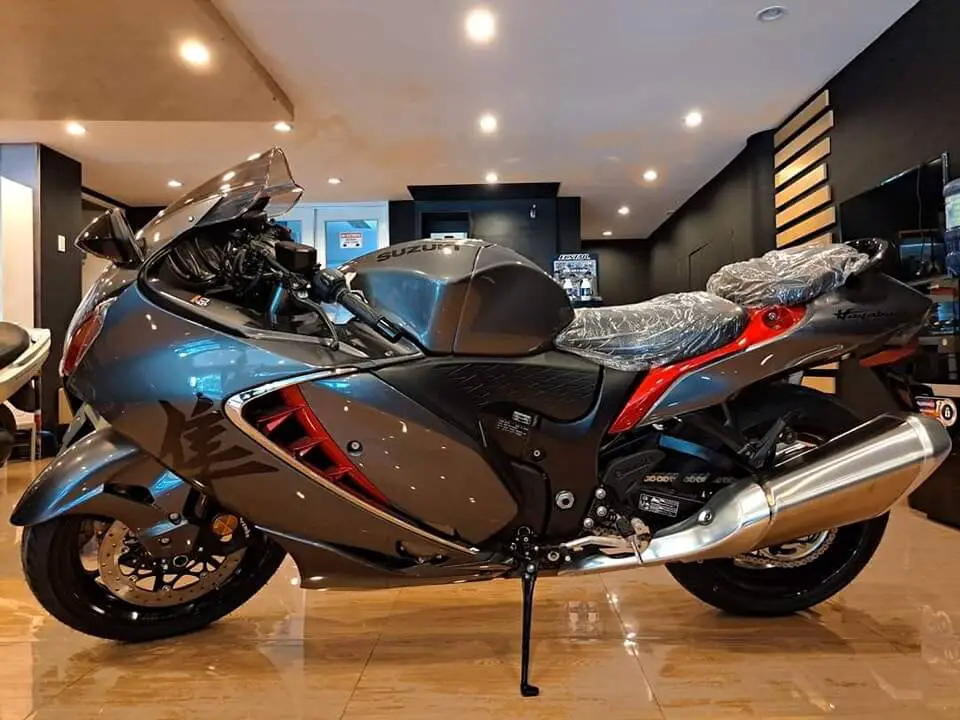
Suzuki shocked the motorcycle world when it debuted the GSX1300R Hayabusa sport bike in 1999. The Japanese manufacturer had created a hyperbike that could outrun just about anything else on two wheels.
In subsequent top speed testing, the first Hayabusa models from 1999 and 2000 officially touched 188-194 mph (303-312 km/h). Suddenly the Hayabusa took the crown as the world’s fastest production motorcycle and hastened what became known as the “speed wars” between manufacturers.
Key Suzuki Hayabusa Specs and Features:
| Specification | Measurement |
|---|---|
| Engine | 1,340 cc (82 cu in) liquid-cooled inline-4 |
| Bore x Stroke | 81.0 mm × 65.0 mm (3.2 in × 2.6 in) |
| Compression Ratio | 12.5:1 |
| Valvetrain | DOHC, 16 valves |
| Maximum Power | 187.7 hp (140 kW) @ 9,700 rpm |
| Maximum Torque | 110.6 lb-ft (150 Nm) @ 7,000 rpm |
| Top Speed | 186 mph (300 km/h) electronically limited |
| Transmission | 6-speed constant mesh |
| Front Suspension | 43 mm inverted telescopic forks with rebound and compression damping |
| Rear Suspension | Link type air suspension with swivel hinge |
| Front Brakes | Dual radial-mount 310 mm discs with 4-piston Brembo Stylema calipers |
| Rear Brakes | Single 220mm disc with 2-piston Nissin caliper |
| Front Tire | 120/70ZR17M/C |
| Rear Tire | 190/50ZR17M/C |
| Wheelbase | 1,480 mm (58.3 in) |
| Seat Height | 800 mm (31.5 in) |
| Wet Weight | 582 lb |
This combination of outrageous power, wind-cutting aerodynamics, and impressive stability at speed allowed the Hayabusa to outpace nearly everything else on the road.
The bike’s name itself communicates speed: “Hayabusa” means “peregrine falcon” in Japanese – a bird species known for reaching top speeds up to 242 mph in mid-air dives for prey.
What Sets the Hayabusa’s Top Speed Apart?
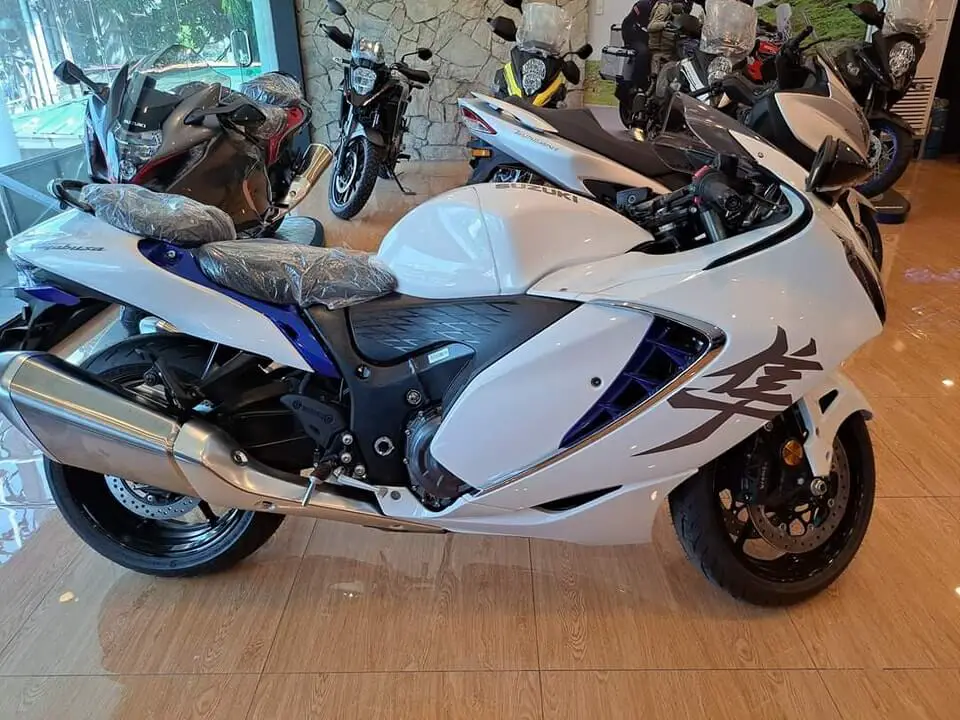
A number of key performance factors allow the Suzuki Hayabusa to reach blinding top speeds, especially:
- Engine: The Hayabusa has a four-stroke, transverse four-cylinder, DOHC engine with 4 valves per cylinder.
- Displacement: The engine displacement is 1340 cc.
- Power: The power output is 187.7 hp at 9700 rpm.
- Torque: The torque output is 150 Nm (110.6 lb-ft) at 7000 rpm.
- Bore x Stroke: The bore and stroke are 81 mm x 65 mm.
- Compression Ratio: The compression ratio is 12.5:1
- Fuel System: The fuel system is a fuel injection with Ride-by-Wire throttle bodies.
Let’s look at some of these elements more closely…
The heart of the Hayabusa is its 1,340 cc liquid-cooled, DOHC fuel-injected inline-4 engine, known as the Suzuki Hayabusa GSX1300R in 2022-2023 models.
With an aggressive 81 mm bore x 65 mm stroke ratio, compression ratio of 12.5:1, and specially designed combustion chambers – it’s no surprise this powerplant churns out 187.7 hp at 9,700 rpm along with 110.6 lb-ft of torque at 7,000 rpm.
The engine’s abundant low-end torque translates into stunning roll-on acceleration in any gear. Coupled with the Hayabusa’s well-selected gear ratios and slipper clutch, the bike explodes forward from a dig with front wheel lift and continues hauling with a near linear power build-up into redline.
Intake and Ram Air System
What sets the Hayabusa even further apart is Suzuki’s specially designed ram air intake system. At high rpm (over 105 mph/170 kph), air enters through vents in the nose fairing and flows into pressurized airboxes before the throttle bodies.
This ram effect leads to denser intake charges, increased power in the top gears, and more peak speed once the Hayabusa is already clocking over 100+ mph.
Aerodynamics and Styling
The Hayabusa boasts specialized bodywork and smooth contours with the rider tucked in. Extensive wind tunnel testing shaped the design for maximum top speed. The sleek fairings and abbreviated tail section minimize drag to let the Busa slice through the air.
Up front, dual projector low beam, high beam halogen headlights flank the ram air intakes and lend a mean, futuristic look. They’re perfectly integrated into the Matte Sword Silver fairing on the 2022-2023 models.
All said, the Hayabusa’s wind-cutting aerodynamics play a major role in minimizing drag at extreme velocities above 180+ mph.
How Does Suzuki Limit the Hayabusa’s Top Speed?
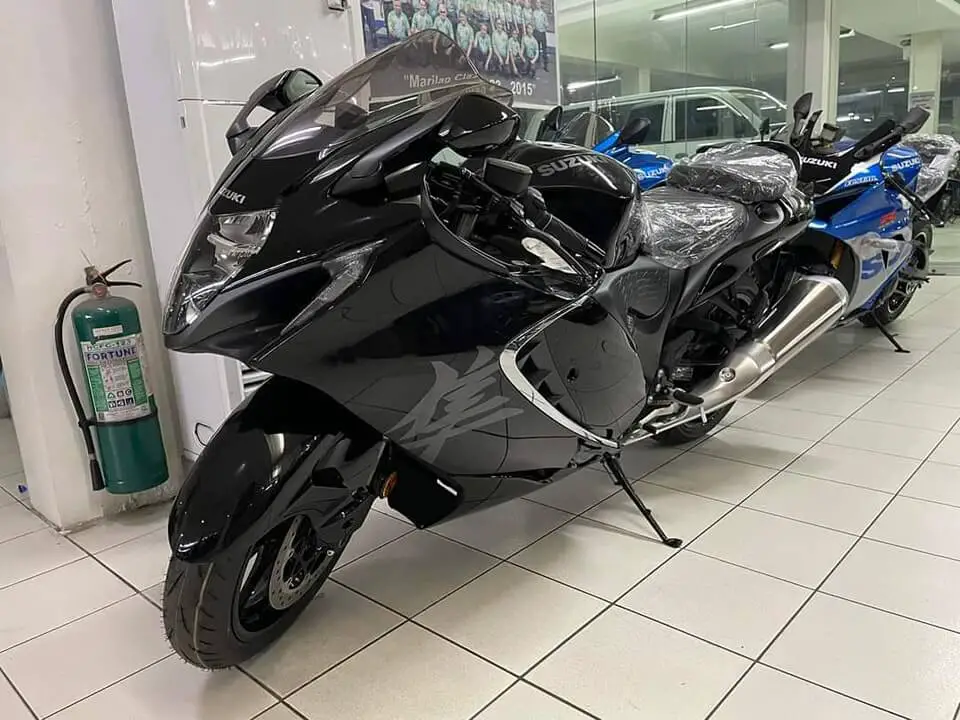
In an effort to constrain top speed battles between manufacturers, Suzuki electronically limits the Hayabusa engine’s rpm to 9,500 in top gear. This equates to an indicated speed of 186 mph (300 km/h).
The bike has potential to reach even greater speeds given its power and aerodynamics. But the limiter essentially functions as a “speed governor” in 6th gear.
So while the 1999 and 2000 models touched verified speeds of 194 mph, Suzuki restricted later versions of the Hayabusa. Other brands like Kawasaki did the same with their contending models at the time.
However, many Hayabusa owners choose to disable or raise this electronic limiter through an ECU reflash. This unleashes the bike’s full acceleration potential on closed courses and tracks.
Still, even in restricted form by the factory, no other production machine has dethroned the Hayabusa’s top speed capabilities after over 20 years.
Record Hayabusa Top Speed Runs
Just how quick is the legendary Hayabusa? Let’s look at some of its verified top speed achievements:
Stock Hayabusa Top Speed
Independent tests showed the stock 1999-2000 models clearing 303-312 km/h or 188-194 mph relatively easily given enough road. Of course, the restricted units from 2001 onwards also cut through the air past 180 mph even before hitting the rev limiter.
To showcase the model’s performance after two decades, Suzuki had a stock 2022 Hayabusa independently tested on the Johnny Bohmer Proving Grounds runway in Florida.
The bone stock bike covered a flying mile from a standing start in 23.58 seconds at a verified speed of 191.581 mph (308.149 km/h) with British rider Russell Jefferies in August 2021.
While gearing prevented an even higher terminal velocity, this run definitively proved the latest Hayabusa’s blinding acceleration requires no modifications whatsoever.
Modified Hayabusa Speed Records
Heavily modified Hayabusas with turbochargers, nitrous oxide, and extended gearing have set numerous land speed records in their engine classes over the years.
Back in 2007, a turbocharged and nitrous boosted Hayabusa ridden by Rocky Robinson screamed through the measured mile at 272.340 mph (438.497 km/h) at the Loring Timing Association meet. It remains one of the fastest runs in the sport bike A-APSBF class.
Other modified Hayabusas have also topped 260+ mph thanks to engine tuning shops that push these motors into 4-digit horsepower territory.
The Hayabusa platform clearly takes well to modifications that unlock its outright, theoretical top speed capabilities extending towards 300 mph. Of course, these machines are built solely for straight line speed runs in controlled conditions with professional riders.
Suzuki Hayabusa Top Speed Capabilities
| Model/Version | Top Speed |
|---|---|
| Stock Hayabusa (unlimited/de-restricted) | 199 mph |
| Stock Hayabusa (limited) | 186 mph (300 kph) |
| 2020 Hayabusa | 190 mph (310 kph) |
| Hayabusa vs H2R | Hayabusa: 199 mph; H2R: 212 mph |
| Turbo Hayabusa | Over 264 mph (425 kph) |
| 2023 Hayabusa | 199 mph |
What’s it Like Riding a Hayabusa Near 200 mph?
While most owners will never explore the Hayabusa’s actual top speed potential, a seasoned rider can routinely exceed 175+ mph quite easily.
But what’s the experience actually like hurtling down the highway approaching the bike’s terminal velocity?
According to CycleWorld’s latest 2022 Suzuki Hayabusa test which touched an indicated 181 mph (291 km/h), here’s some perspective:
“The Hayabusa feels steady as a rock blasting through 176 mph… it’s also confidence-inspiring and feels amazingly stable in ultra-high-speed riding situations.”
The Hayabusa chassis plays a big role here with its extended wheelbase for straight line stability. The fully adjustable suspension smoothes out rough pavement and keeps things on line. Plus the rigid aluminum frame provides a solid riding platform when the scenery starts blurring past.
The broad 200mm rear tire also maintains consistent contact through high speed sweepers without major mid-corner wobbles. And rider ergonomics position you low with feet slightly behind hips to hang off in turns without compromising comfort, even on all-day rides.
In braking tests, the Hayabusa’s radial mounted Brembo Stylema front brake calipers bring the beast to a stop from 60-0 mph in just 117 feet – impressive for a 600 lb motorcycle without a parachute! The ABS system intervenes smoothly to prevent lock up during hard decelerations.
So while the Hayabusa certainly has a wild streak when the throttle gets cracked open, it remarkably stays quite predictable and stable even approaching its limited top speed.
Pros and Cons of Buying a Suzuki Hayabusa
Pros
- Highest top speed of any production bike
- Stunning acceleration
- Bulletproof 1,340cc inline-4 engine
- Max torque hits early for potent roll-ons
- Specialized ram air intake for top-end power
- Wind tunnel-tested aerodynamics
- Surprisingly nimble handling despite its size
- Relative comfort for a sport bike
- Iconic, head-turning styling
- Excellent brakes and ABS
Cons
- Expensive purchase price
- Costly insurance premiums
- Low fuel range (~150 miles per tank)
- Tall seat height (31.5 inches)
- Repairs and maintenance add up
- Easily capable of illegal speeds
- Power intimates novice riders
What Hayabusa Owners Say About Their Bikes
With a passionate worldwide owner community, here’s what Hayabusa riders themselves say they love (and sometimes dislike) about their machines:
“The acceleration is truly mind-bending. Nothing comes close to the brutal force you feel above 8000 rpm in the first three gears. Just a beast underneath you.“
“Once you get it around 120 mph, it feels like breaking the speed of sound. The intake roar gets deafening and you blast through speeds that are quite frankly terrifying if you think about it. Never fails to put a huge grin under my helmet…“
“It’s comfortable enough that I can ride for a few hours at a stretch. The adjustable windscreen helps divert wind at speed. Seat accommodates longer trips better than any hardcore supersport.“
“The twin Brembo Stylema radial calipers offer phenomenal stopping power from insane velocities. Adding steel braided lines makes them even touchier.“
“I added a Power Commander to fix the lean low rpm fueling. Then a full titanium/carbon Arrow exhaust which shrieks like a demon above 8000 rpm.“
Some owners do complain about the tall seat height, expensive insurance costs in certain regions, low gas mileage, and rapid tire wear at extreme lean angles. But most claim they’re worth the trade-off to own the world’s fastest ready-to-ride production motorcycle!
Best Hayabusa Performance Modifications
Here are 5 of the most popular ways Hayabusa owners unlock even more ferocious acceleration from their machines:
- Full exhaust systems reduce weight while adding top end horsepower. Popular options are Akrapovic, Yoshimura, and Two Brothers Racing slip-ons and high performance mufflers.
- ECU power commanders optimize fueling across the rev range for as much as a 10 hp gain to the rear wheel. Dyno tuned fuel maps are tailored to match your intake and exhaust upgrades.
- Raise the speed limiter with ECU reflash for higher terminal velocity. Some drag racing riders completely remove it.
- Turbocharger kits effectively double the Busa’s horsepower for 300+ mph potential. But expensive and not street legal.
- Nitrous oxide injection supplies on-demand power bursts for $700-1500 in basic wet kit systems. Great for erratic power delivery to upset chassis balance and traction.
Similar Motorcycles vs Suzuki Hayabusa
The Hayabusa really occupies a class of its own ever since originating the hyperbike category. But here are two high performance sport bikes that align closely with its extreme straight line speed capabilities:
- Kawasaki Ninja ZX-14R – After briefly holding the production motorcycle top speed crown in 2006, Kawasaki’s 200 hp ZX-14R remains a top Hayabusa alternative known for potent roll-on acceleration.
- Honda CBR1100XX Super Blackbird – Before the arrival of the original 1999 Suzuki Hayabusa, Honda’s CBR held the title of world’s fastest production bike for 7 years running. It makes a great used buy these days.
Conclusion
Over two decades since its debut, the Suzuki Hayabusa can still claim the title as the fastest ready-to-ride production motorcycle money can buy. Its balanced combination of 147 kW (197 hp) engine power, ram air intake, wind tunnel aerodynamics, and electronically limited top speed of 186 mph (300 km/h) keeps it a step above outbound rivals.
Very few machines can come close to matching the Hayabusa’s raw acceleration and balls-out velocity in stock form. And heavily modified Busa’s have proven the platform’s potential by exceeding 250+ mph at specialty speed trial events.
So while the Hayabusa possesses performance that most mere mortals already can’t fully utilize on the street, it retains an unmatched top speed crown – reigning as an emphatic king of velocity and rider bragging rights for decades running.
The Suzuki Hayabusa remains a prime object of rider desire and a staple benchmark that other manufacturers aspire to dethrone… one day.
